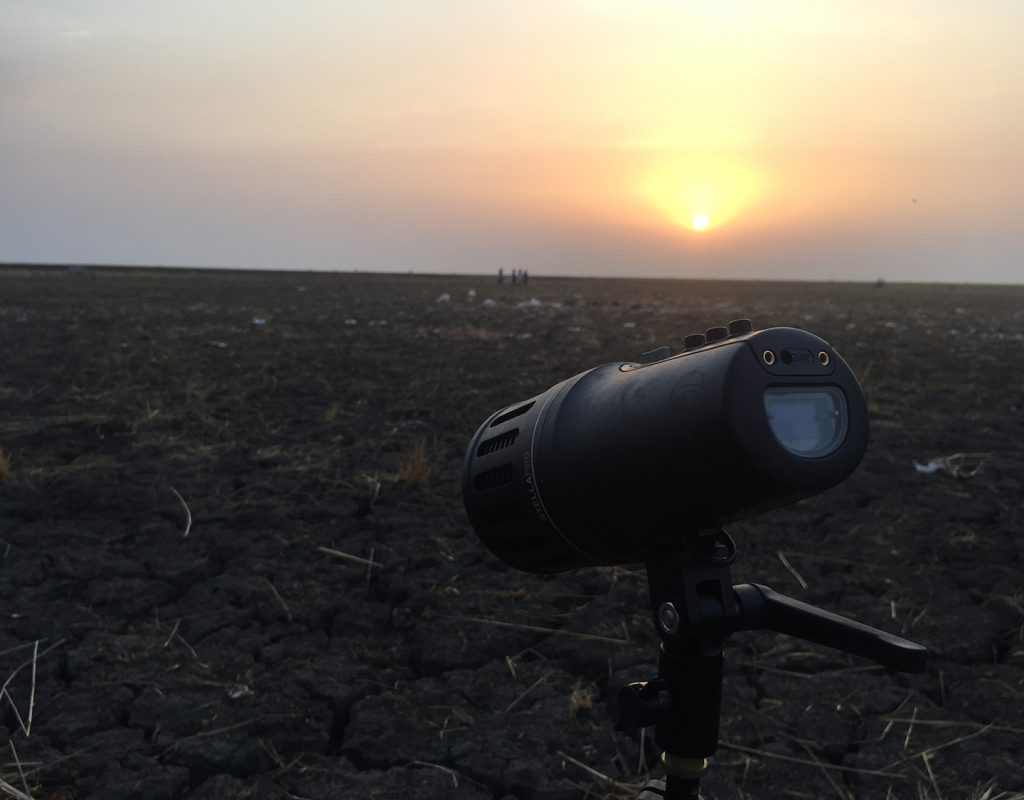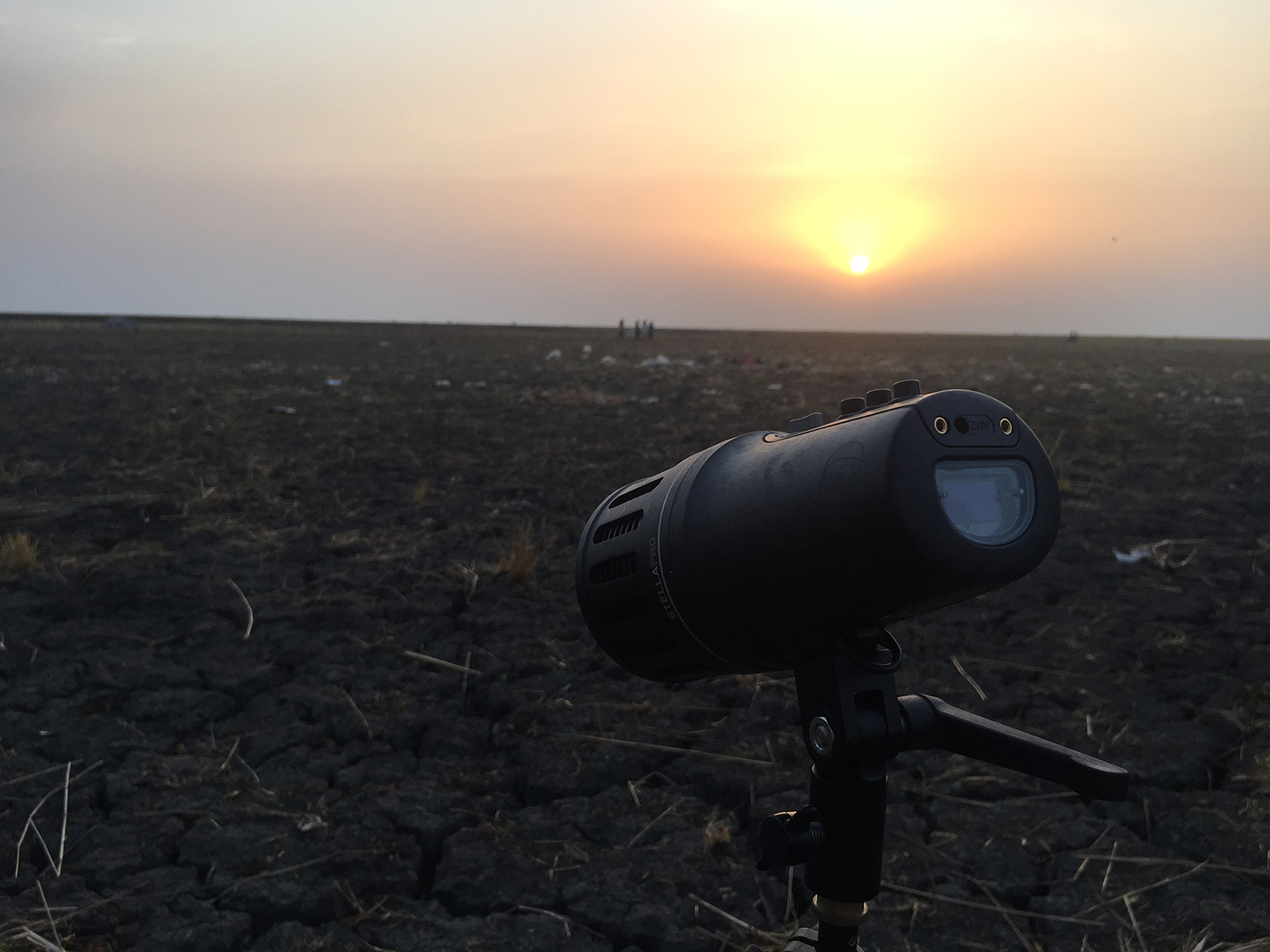
Light and Motion advertises their line of Stella Pro lights with phrases like: “travels anywhere” and “perfect for mobile production crews and independent filmmakers”. The benefits of lights like these for a traveling filmmaker is the fact they are waterproof, have a 90+ minute built in battery, are drop resistant, and pack a punch, pushing out 1000 to 8000 Lumens , making them plenty bright enough to use during the day. All this in a package the size of a 40oz beer can.
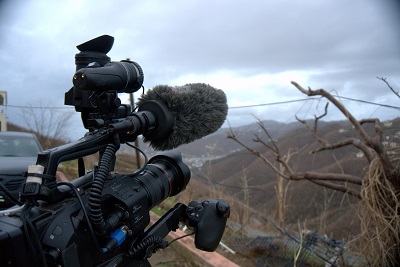 As a documentary filmmaker who works in areas of humanitarian crisis and sometimes conflicts, power, output, and small fixture sizes normally don’t go hand in hand with lights. I usually have to choose from two out of the three (if I’m lucky) and hope that I’ve made the right choice. Weight is always an issue as we pack our own water on most trips, so the smaller fixtures normally win and we have to deal with lack of output or power issues as a result. The Stella Pro lights sounded like a solution to my problem.
As a documentary filmmaker who works in areas of humanitarian crisis and sometimes conflicts, power, output, and small fixture sizes normally don’t go hand in hand with lights. I usually have to choose from two out of the three (if I’m lucky) and hope that I’ve made the right choice. Weight is always an issue as we pack our own water on most trips, so the smaller fixtures normally win and we have to deal with lack of output or power issues as a result. The Stella Pro lights sounded like a solution to my problem.
Traditionally, taking lights, including LEDs, has presented challenging issues for my productions, such as durability, power consumption, weight, size, and the capability of being set up and torn down quickly. After breaking many LED panels, our team has resorted to just buying cheap ones from Amazon, dealing with the color issues in post and considering lights to be “disposable”… until now…
I took this series of lights to cover the aftermath and recovery efforts of Hurricane Harvey in the British Virgin Islands and ended up riding out Hurricane Maria while still there. Soon after, I headed to Bangladesh for the Rohingya refugee crisis and, most recently, to South Sudan to film and observe food and supply air drops. Between my travels and Stella’s website, here’s what I learned:
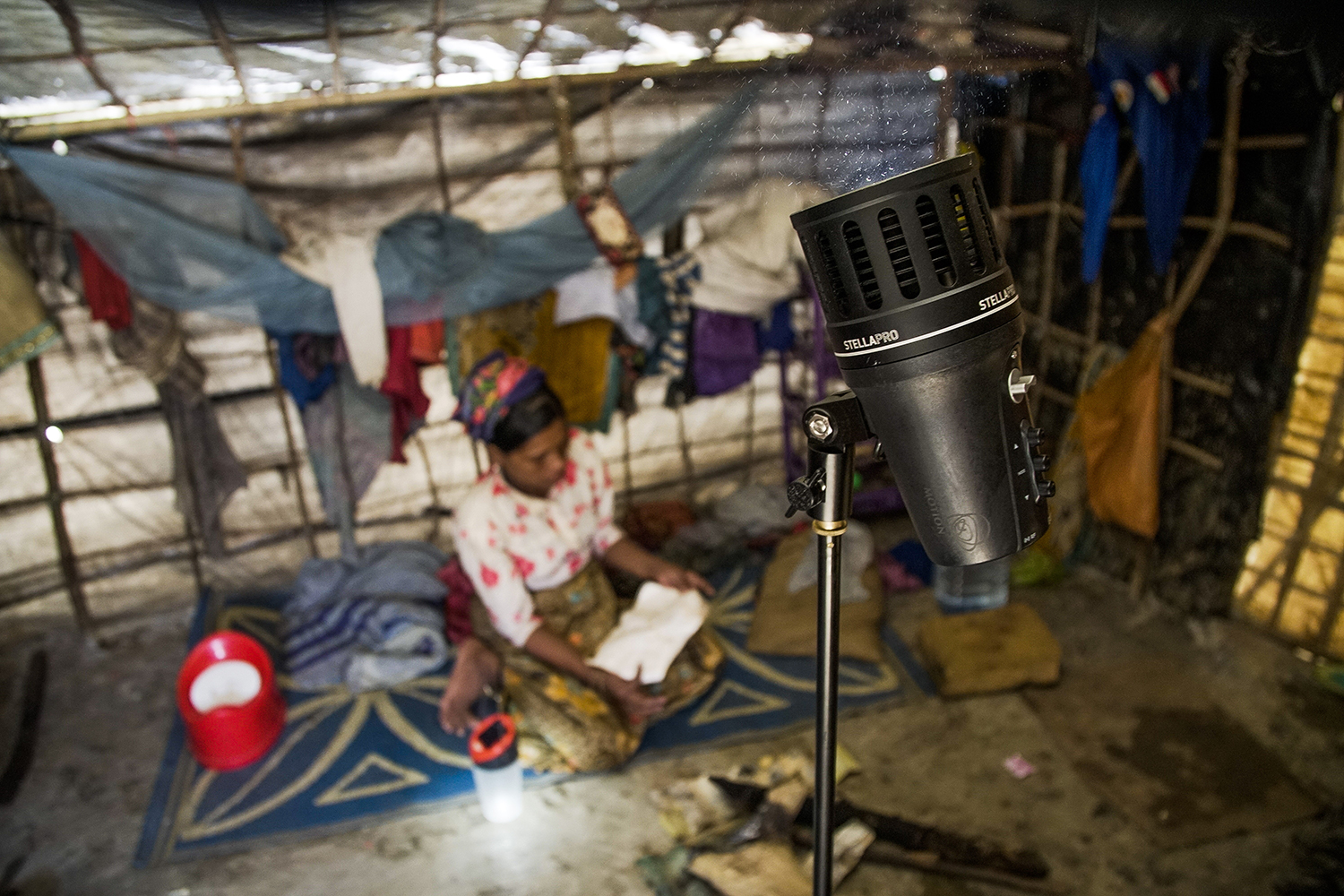 What You Get
What You Get
The core lineup has 5 lights. A 1000, 2000, 5000 RF, 8000 RF, and 10000. Each light has a 120 degree shooting angle, and when bought as part of the action pack, they come with barn doors, a diffuser, and a beam modifier. The 8000 RF & 10000 have fans, due to the high output, and are water resistant, not waterproof. The 10000 was slightly overkill for my line of work, so I didn’t take it on my trips. Brian Hallett did a great review of these lights last year, in which he explains the different models and how he used them in the more traditional settings.
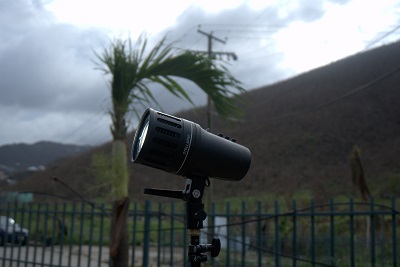 The 5000 RF and 8000 RF lights come with a remote (hence the RF) that you can use to turn them on and off. During Hurricane Maria, I found a unique use for this. The hurricane hit during the middle of the night. By zip tying the 5000 RF to a pole, I was able to control it with the remote from a safe distance. I could turn it on and off to get my b-roll through the night and didn’t have to worry about getting hit by debris. I never thought I would find the remote helpful but this is what I ended up doing with it….I am sure others can think of more day to day applications.
The 5000 RF and 8000 RF lights come with a remote (hence the RF) that you can use to turn them on and off. During Hurricane Maria, I found a unique use for this. The hurricane hit during the middle of the night. By zip tying the 5000 RF to a pole, I was able to control it with the remote from a safe distance. I could turn it on and off to get my b-roll through the night and didn’t have to worry about getting hit by debris. I never thought I would find the remote helpful but this is what I ended up doing with it….I am sure others can think of more day to day applications.
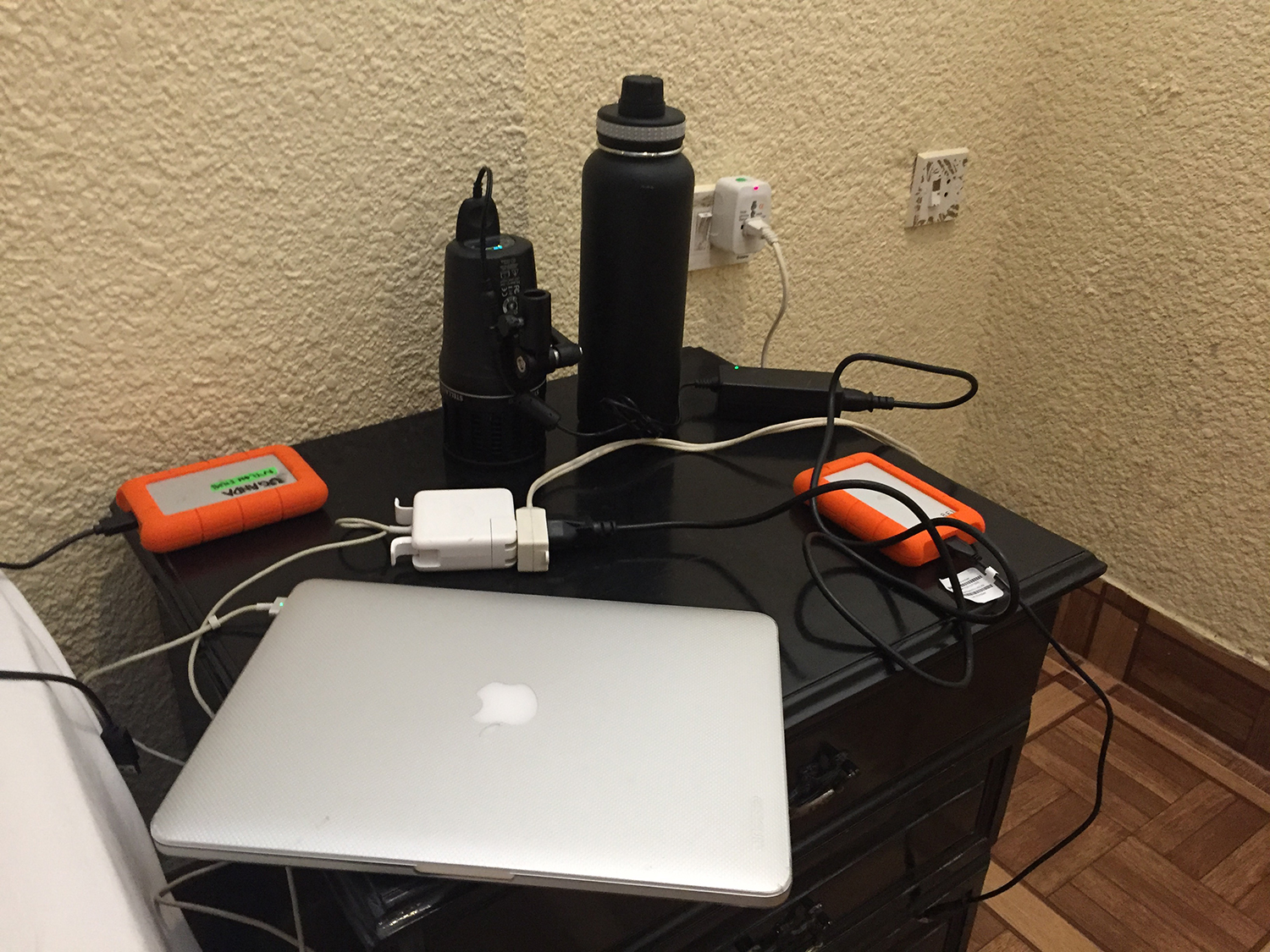 Size Matters
Size Matters
Three lights fit into a small Tenba “BYOB” style camera insert bag, along with all the light modifiers and chargers needed to charge the lights. With the limitation of only two checked bags, getting my tripod, lights, drone, clothes, sleeping bag, chargers, water filter, and some food, these lights packed down great and were just thrown into my duffle bag.
With the lack of roads in places like South Sudan and Bangladesh we often times will to carry everything up to a mile for a shot. We simply toss the light with a stand into a backpack with our other gear, carry it to our location, set it on the stand and do the shoot. The lights are submersible to 100 meters, so after a shoot we would find some water, dunk the light to cool it off, toss it back in my backpack and run to the next location.
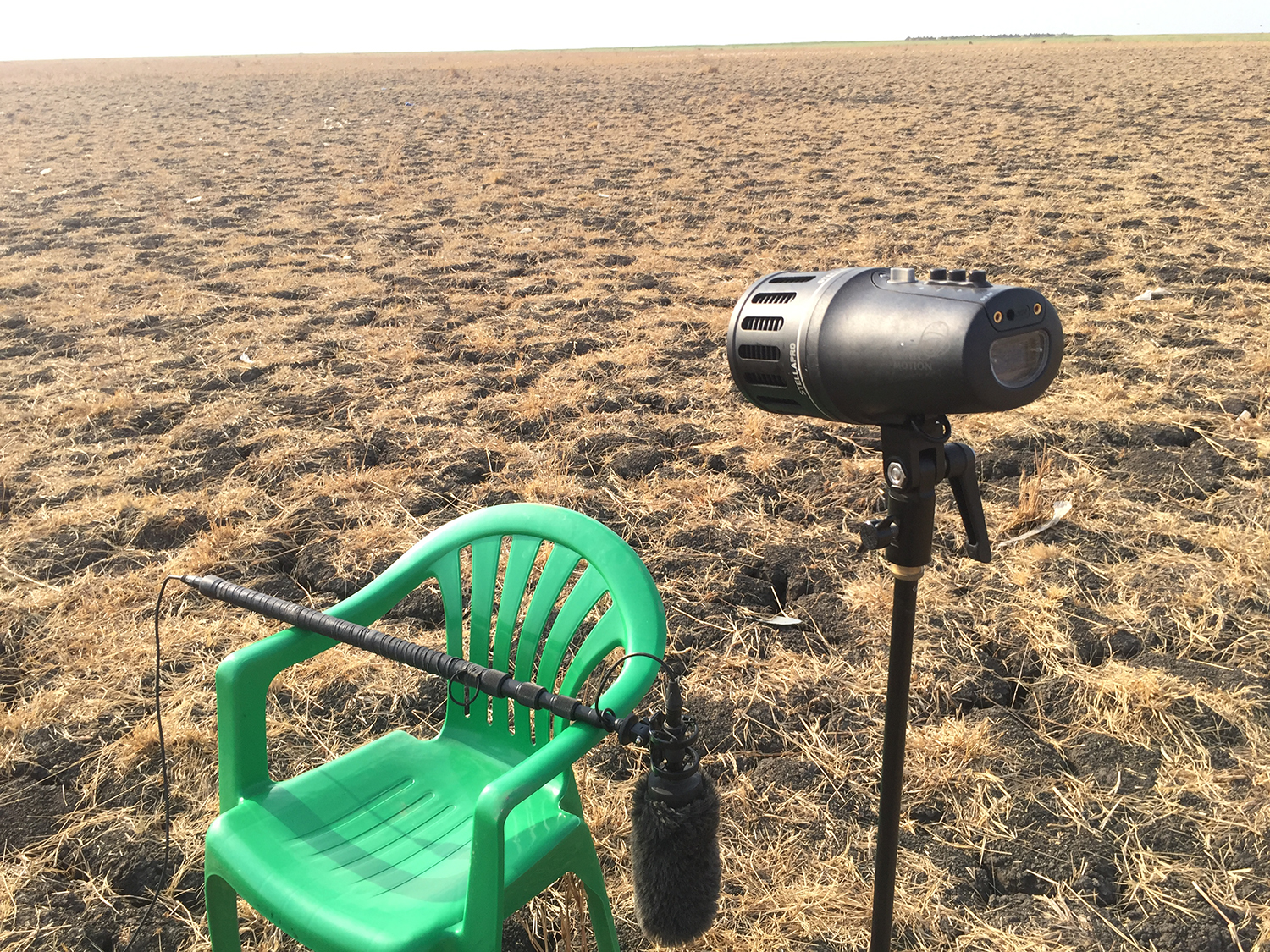 They Take A Beating
They Take A Beating
 One thing I knew needed to be done, but was scared to do, was the drop test. Given our line of work, this was important, but I had quickly fallen in love with the little guys and was too scared to try it. However, the opportunity presented itself when, one evening, I neglected to lock the 1000 into the cold shoe on my camera tight enough. I was leaning over a railing shooting something below me and when I shifted up, the light popped out of the hot shoe, allowing the light to fall about 3 meters onto concrete. Upon inspection, there was no visible damage and the light was still in working order. This is typically the time we would have written off a traditional LED; not with the Stella Pro. These lights are super durable. We rarely have the luxury or time to truly protect our gear. I oftentimes keep the light mounted to the light stand and toss it in the back of a truck with no protection. It would simply bounce around with no issue.
One thing I knew needed to be done, but was scared to do, was the drop test. Given our line of work, this was important, but I had quickly fallen in love with the little guys and was too scared to try it. However, the opportunity presented itself when, one evening, I neglected to lock the 1000 into the cold shoe on my camera tight enough. I was leaning over a railing shooting something below me and when I shifted up, the light popped out of the hot shoe, allowing the light to fall about 3 meters onto concrete. Upon inspection, there was no visible damage and the light was still in working order. This is typically the time we would have written off a traditional LED; not with the Stella Pro. These lights are super durable. We rarely have the luxury or time to truly protect our gear. I oftentimes keep the light mounted to the light stand and toss it in the back of a truck with no protection. It would simply bounce around with no issue.
In South Sudan, the lights were in 110 to 115 degree heat for days on end and worked great and held up in the heat. I think I suffered more than the lights did.
 Power
Power
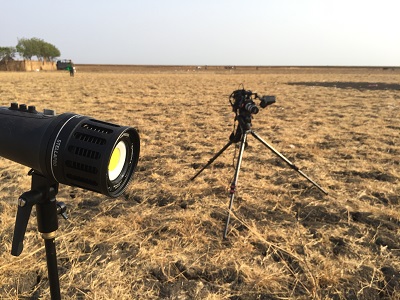 We see sexy photos of camera bags neatly packed with a camera, laptop, hard drives, and a mug of coffee all over equipment websites and social media. What is never shown to you is the suitcase full of plugs and 6 different types of batteries to power every new widget you’ve got to have…
We see sexy photos of camera bags neatly packed with a camera, laptop, hard drives, and a mug of coffee all over equipment websites and social media. What is never shown to you is the suitcase full of plugs and 6 different types of batteries to power every new widget you’ve got to have…
Wrapping my head around the charging process and power adapters took a while compared to conventional LED and hot lights. Once I figured out the charging process, I could see the level of genius from the engineers. Each fixture comes with an adapter that plugs into the back of the light. Because these lights are water proof, the adapter is kind of funny looking, hugging the light to make contact with the exposed electrodes. These adapters then have about 3 inches of cable before to goes to another connector which you can then connect with a traditional AC adapter, car charging adapter, or P-tap (gotta love P-tap!). You can mix and match it whatever way you want based off your power source. The 1000 and 2000 lights use one size of power adapter and the 5000 and 8000 use another size. We ended up tossing 2 of the p-taps, one car charger, and 2 AC power adapters into our kit. Charging the lights was the tricky part because we only had a few hours to charge everything at night using a generator. However the lights charge extremely fast, so they were never the item we were waiting on to finish charging. Each light lasts around 90+ min using the internal battery. This makes it pretty easy to just toss the light up, turn it on, and done. No finding your Sony battery or gold pate batteries, no connecting them, nothing.
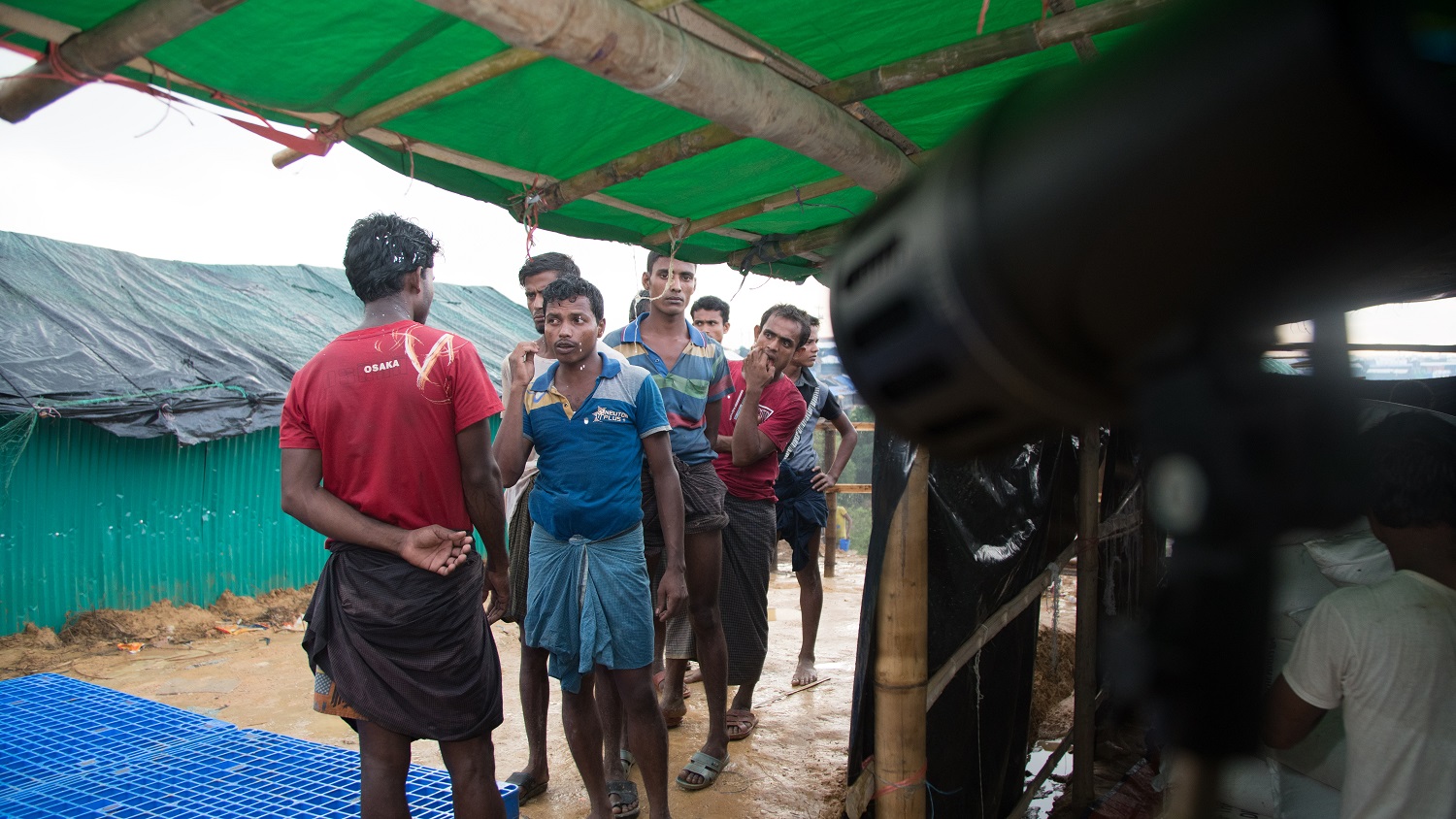 Signing Off
Signing Off
 When PVC and Light & Motion approached me to review these lights, I had this thought that I would never find the perfect light or tool for my line of work. Breaking gear is part of the process and I’ve learned to not love a piece of gear because it ends up failing me in the end. I’ve changed my mind.
When PVC and Light & Motion approached me to review these lights, I had this thought that I would never find the perfect light or tool for my line of work. Breaking gear is part of the process and I’ve learned to not love a piece of gear because it ends up failing me in the end. I’ve changed my mind.
I do not want to give up these lights. They traveled with me across the world into very horrible conditions and the only real complaint I have is that I wish there was a universal charger for the lights. Seriously! These things are great!
Lightweight, built in batteries, drop resistant, water proof, and amazing light quality. These lights are products that I will be using for years to come!

Filmtools
Filmmakers go-to destination for pre-production, production & post production equipment!
Shop Now